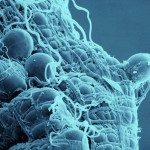Link to Pubmed [PMID] – 29673983
Link to DOI – S1567-1348(18)30196-510.1016/j.meegid.2018.04.018
Infect. Genet. Evol. 2018 08; 62(): 60-72
Population genetics theory predicted that rare frequent markers would be the main contributors for heritability of complex diseases, but meta-analyses of genome-wide association studies are revealing otherwise common markers, present in all population groups, as the identified candidate genes. In this work, we applied a population-genetics informed meta-analysis to 10 markers located in seven genes said to be associated with dengue fever disease. Seven markers (in PLCE1, CD32, CD209, OAS1 and OAS3 genes) have high-frequency and the other three (in MICB and TNFA genes) have intermediate frequency. Most of these markers have high discriminatory power between population groups, but their frequencies follow the rules of genetic drift, and seem to have not been under strong selective pressure. There was a good agreement in directional consistency across trans-ethnic association signals, in East Asian and Latin American cohorts, with heterogeneity generated by randomness between studies and especially by low sample sizes. This led to confirm the following significant associations: with DF, odds ratio of 0.67 for TNFA-rs1800629-A; with DHF, 0.82 for CD32-rs1801274-G; with DSS, 0.55 for OAS3-rs2285933-G, 0.80 for PLCE1-rs2274223-G and 1.32 for MICB-rs3132468-C. The overall genetic risks confirmed sub-Saharan African populations and descendants as the best protected against the severer forms of the disease, while Southeast and Northeast Asians are the least protected ones. European and close neighbours are the best protected against dengue fever, while, again, Southeast and Northeast Asians are the least protected ones. These risk scores provide important predictive information for the largely naïve European and North American regions, as well as for Africa where misdiagnosis with other hemorrhagic diseases is of concern.
